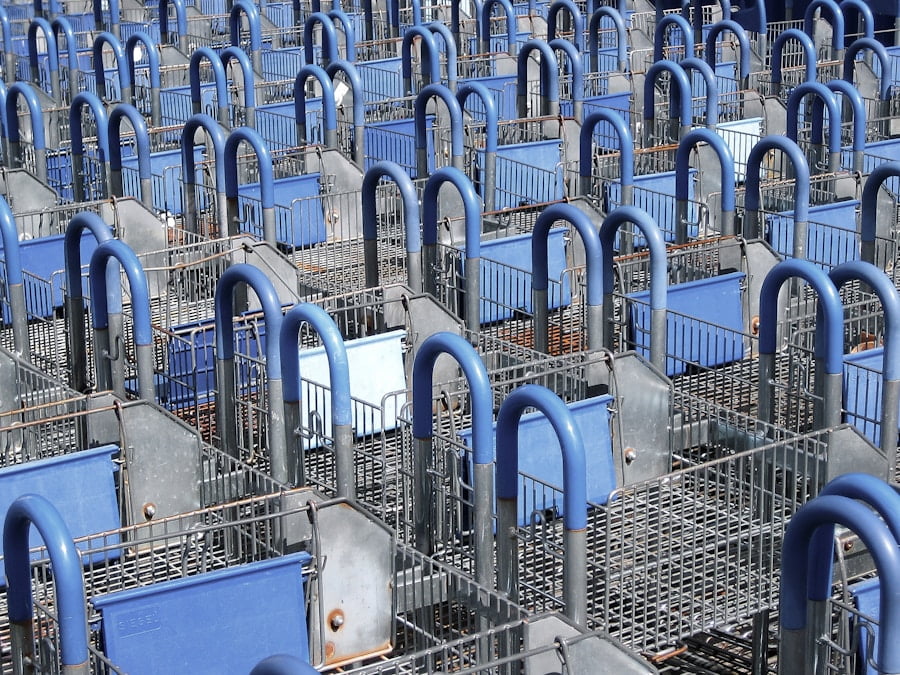Introduction: The Importance of Avoiding Deindexation
In the world of blogging, visibility is key. The more visible your blog is to search engines, the more likely it is to attract organic traffic and gain a loyal readership. However, there is a threat that can hinder your blog’s visibility and potentially wipe it off search engine results pages (SERPs) altogether: deindexation. Deindexation occurs when search engines remove your website or specific pages from their index, making them virtually invisible to users searching for relevant content. It is crucial for bloggers to understand the causes and consequences of deindexation in order to avoid it and maintain their blog’s visibility. To help bloggers avoid deindexation and maintain their blog’s visibility, we have created the ultimate deindexation checklist.
Understanding Deindexation and Its Causes
Deindexation refers to the removal of a website or specific pages from search engine indexes. When a website is deindexed, it no longer appears in search engine results, making it extremely difficult for users to find it. This can be disastrous for bloggers who rely on organic traffic to drive readership and engagement.
There are several common causes of deindexation that bloggers should be aware of. One of the most common causes is duplicate content. Search engines prioritize unique and original content, so if your blog has duplicate content, it may be flagged as spam and deindexed. Another cause of deindexation is spammy backlinks. If your blog has a large number of low-quality or irrelevant backlinks, search engines may view it as manipulative and penalize it by removing it from their index. Technical issues, such as server errors or incorrect use of robots.txt, can also lead to deindexation.
The Consequences of Deindexation for Your Blog
The consequences of deindexation can be severe for your blog’s visibility and traffic. When your blog is deindexed, it essentially disappears from search engine results, making it nearly impossible for users to find it. This means that all the hard work you put into creating valuable content and building an audience goes to waste. Without organic traffic from search engines, your blog’s visibility and reach will be severely limited.
Recovering from deindexation can be a long and arduous process. Even if you fix the issues that caused your blog to be deindexed, it can take weeks or even months for search engines to reindex your site and restore its visibility. During this time, your blog’s traffic and engagement will suffer, potentially leading to a loss of readership and revenue. It is therefore crucial to take proactive steps to avoid deindexation and maintain your blog’s visibility.
The Ultimate Deindexation Checklist: A Step-by-Step Guide
This step-by-step guide will walk you through the key actions you need to take to ensure your blog stays visible and accessible to search engines.
Step 1: Conduct a Content Audit
A content audit is an essential first step in avoiding deindexation. It involves reviewing all the content on your blog to identify any issues that could lead to deindexation. During a content audit, you should look for duplicate content, thin or low-quality content, and any other issues that could negatively impact your blog’s visibility.
To conduct a content audit, you can use tools like Screaming Frog or Google Analytics. These tools can help you identify duplicate content, pages with low word counts, and other potential issues. Once you have identified any problematic content, you can take steps to fix or remove it to avoid deindexation.
Step 2: Check for Duplicate Content
Duplicate content is one of the most common causes of deindexation. Search engines prioritize unique and original content, so if your blog has duplicate content, it may be penalized and removed from search engine indexes.
To check for duplicate content on your blog, you can use tools like Copyscape or Siteliner. These tools will scan your blog and identify any instances of duplicate content. If you find duplicate content, you should take steps to either remove it or make it unique. This could involve rewriting the content, adding new information or insights, or consolidating similar pages into one comprehensive piece of content.
Step 3: Monitor Your Backlinks
Backlinks are an important factor in search engine rankings, but they can also be a cause of deindexation if they are spammy or low-quality. It is important to regularly monitor your backlinks to ensure they are from reputable sources and relevant to your blog’s niche.
To monitor your backlinks, you can use tools like Ahrefs or Majestic. These tools will provide you with a list of all the websites that link to your blog. You should review this list regularly and disavow any backlinks that are spammy or irrelevant. By keeping a close eye on your backlink profile, you can avoid potential deindexation issues and maintain your blog’s visibility.
Step 4: Review Your Site Structure and Navigation
Your blog’s site structure and navigation play a crucial role in its visibility and accessibility to search engines. If your site structure is disorganized or your navigation is confusing, search engines may have difficulty crawling and indexing your blog, leading to deindexation.
To review your site structure and navigation, you can use tools like Google Search Console or Screaming Frog. These tools will provide insights into how search engines view and crawl your blog. You should look for any issues, such as broken links, orphaned pages, or pages that are difficult for search engines to access. By fixing these issues and optimizing your site’s structure and navigation, you can improve your blog’s visibility and reduce the risk of deindexation.
Step 5: Ensure Your Site is Mobile-Friendly
Having a mobile-friendly website is not only important for the user experience, but it is also crucial for avoiding deindexation. With the rise of mobile devices, search engines prioritize mobile-friendly websites in their rankings. If your blog is not mobile-friendly, it may be penalized and removed from search engine indexes.
To ensure your site is mobile-friendly, you can use Google’s Mobile-Friendly Test. This tool will analyze your blog and provide recommendations for improving its mobile friendliness. You should follow these recommendations and make any necessary changes to ensure your blog is accessible and user-friendly on all devices.
Step 6: Submit Your Sitemap to Search Engines
Submitting a sitemap to search engines is an important step in ensuring your blog’s visibility and accessibility. A sitemap is a file that lists all the pages on your blog and provides information about their importance and frequency of updates. By submitting a sitemap to search engines, you are making it easier for them to crawl and index your blog.
To submit a sitemap, you can use Google Search Console or other search engine webmaster tools. These tools will guide you through the process of creating and submitting a sitemap. Once your sitemap is submitted, search engines will have a clear roadmap of your blog’s structure and content, making it easier for them to index and rank your pages.
Conclusion: Maintaining Your Blog’s Visibility and Rankings
In the competitive world of blogging, maintaining visibility and rankings is crucial for success. Deindexation can have severe consequences for your blog’s visibility and traffic, making it essential to take proactive steps to avoid it. By following the ultimate deindexation checklist outlined in this article, you can ensure that your blog stays visible and accessible to search engines. Conducting a content audit, checking for duplicate content, monitoring backlinks, reviewing site structure and navigation, ensuring mobile friendliness, and submitting a sitemap are all key actions that will help you avoid deindexation and maintain your blog’s visibility and rankings. So, take the necessary steps to protect your blog from deindexation and continue to attract organic traffic and engage with your readership.







































0 Comments